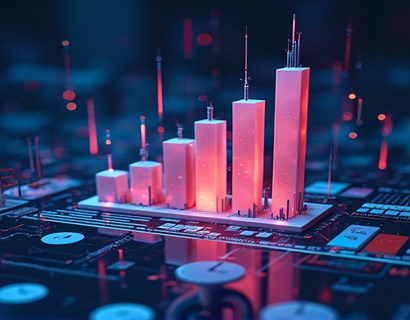AI-Driven Insights into Nanobot Technology: A Secure and Educational Platform for All
In the rapidly evolving field of nanotechnology, nanobots stand out as a revolutionary application with vast potential across various industries. From medical treatments to environmental cleanup, the possibilities are vast and exciting. However, the complexity of this technology often makes it challenging for educators, professionals, and enthusiasts to stay informed and educated. To address this gap, an AI-driven chat platform has been developed, offering expert insights into nanobot technology while ensuring a verified, secure, and child-friendly learning environment. This platform serves as a valuable resource for educators, professionals, and students, providing them with the tools to explore and understand advanced nanotechnology safely and effectively.
Understanding Nanobot Technology
Nanobots, or nanorobots, are microscopic machines designed to perform specific tasks at the nanoscale. These tiny robots are engineered to manipulate matter at the atomic and molecular level, enabling precise and efficient operations. The field of nanobot technology intersects with multiple disciplines, including robotics, materials science, biology, and medicine. To grasp the full potential of nanobots, it is essential to understand their fundamental principles and applications.
At the core, nanobots are built using nanomaterials and nanofabrication techniques. These materials and methods allow for the creation of structures and devices that can operate within the nanometer range, typically between 1 and 100 nanometers. The size of nanobots enables them to interact with biological systems, such as cells and tissues, with minimal invasiveness. This characteristic makes them particularly useful in medical applications, where they can be used for targeted drug delivery, disease diagnosis, and even surgical procedures.
Applications of Nanobots in Various Fields
The potential applications of nanobots are vast and varied, spanning multiple industries. In the medical field, nanobots hold promise for revolutionizing healthcare. For instance, they can be designed to deliver drugs directly to cancer cells, reducing the side effects associated with traditional chemotherapy. Additionally, nanobots can be used for real-time monitoring of bodily functions, providing continuous health data to healthcare providers. This capability can lead to early detection of diseases and more personalized treatment plans.
Beyond medicine, nanobots have significant implications for environmental science. They can be employed to clean up pollutants and contaminants in water and soil, offering a sustainable solution to environmental degradation. Nanobots can break down toxic substances into harmless components, helping to restore ecosystems and protect biodiversity. In the field of manufacturing, nanobots can enhance precision and efficiency, leading to the production of high-quality materials and components with minimal waste.
In agriculture, nanobots can improve crop yields and reduce the need for chemical pesticides and fertilizers. By monitoring soil conditions and plant health at the molecular level, nanobots can provide targeted interventions, optimizing resource use and promoting sustainable farming practices. The versatility of nanobots makes them a valuable tool across various sectors, driving innovation and progress.
Challenges and Considerations in Nanobot Technology
Despite the promising applications, the development and deployment of nanobots come with several challenges. One of the primary concerns is the ethical and safety implications of introducing microscopic machines into biological systems. Ensuring that nanobots do not cause unintended harm to human health or the environment is crucial. Rigorous testing and regulatory frameworks are necessary to address these concerns and build public trust.
Another challenge lies in the technical complexity of designing and manufacturing nanobots. The miniaturization required for these devices pushes the boundaries of current engineering capabilities. Advances in nanofabrication and materials science are essential to overcome these technical hurdles. Collaboration between researchers, engineers, and industry experts is vital to drive innovation and bring nanobot technology to fruition.
Moreover, the high cost of research and development can be a barrier to widespread adoption. Funding and investment are needed to support cutting-edge research and translate scientific discoveries into practical applications. Public-private partnerships and government support can play a crucial role in fostering the growth of the nanobot industry.
Role of AI in Advancing Nanobot Technology
Artificial Intelligence (AI) plays a pivotal role in advancing nanobot technology. AI-driven tools can simulate and model the behavior of nanobots, helping researchers to design more efficient and effective devices. Machine learning algorithms can analyze vast amounts of data to identify patterns and optimize nanobot performance. This synergy between AI and nanotechnology accelerates the development process and enhances the potential applications of nanobots.
An AI-driven chat platform can serve as a valuable resource for those interested in nanobot technology. Such a platform can provide verified information, expert insights, and educational content tailored to different audiences. By leveraging AI, the platform can offer real-time answers to queries, personalized learning paths, and interactive simulations, making complex concepts more accessible and engaging.
Ensuring Verified and Child-Friendly Content
To ensure that the information provided is accurate and reliable, the AI chat platform employs rigorous content verification processes. Expert contributors and peer-reviewed sources are used to validate the content, ensuring that users receive trustworthy and up-to-date information. This commitment to accuracy is particularly important in a field as critical as nanobot technology, where misunderstandings can lead to misinformation and potential risks.
Recognizing the importance of education for all age groups, the platform offers a child-friendly version of its content. This version simplifies complex concepts, uses age-appropriate language, and incorporates interactive elements to engage young learners. By making nanobot technology accessible to children and students, the platform fosters early interest and curiosity in STEM fields, potentially inspiring the next generation of innovators.
Interactive Learning Experiences
The AI chat platform goes beyond providing static information by offering interactive learning experiences. Users can engage in conversations with the AI, asking questions and receiving detailed explanations. The platform can also guide users through step-by-step tutorials, interactive simulations, and virtual labs, allowing them to explore nanobot technology hands-on. These interactive features enhance understanding and retention, making the learning process more effective and enjoyable.
For educators, the platform offers a range of tools to integrate nanobot technology into their curricula. Lesson plans, teaching guides, and assessment materials are available to help educators design comprehensive and engaging lessons. The platform's AI can also assist teachers by answering student questions, providing additional resources, and offering real-time feedback, thereby supporting personalized learning experiences.
Community and Collaboration
The AI chat platform fosters a community of learners, educators, and professionals interested in nanobot technology. Users can join discussion forums, share insights, and collaborate on projects, creating a dynamic and supportive environment. This community aspect encourages knowledge exchange and collaboration, driving collective progress in the field. Whether it's a student seeking guidance, a researcher looking for collaboration opportunities, or an educator aiming to enhance their teaching methods, the platform provides a valuable space for interaction and growth.
Furthermore, the platform can host webinars, workshops, and online conferences, bringing together experts from around the world to discuss the latest developments and trends in nanobot technology. These events can be recorded and made available on-demand, ensuring that users can access valuable content at their convenience.
Conclusion
The AI-driven chat platform dedicated to nanobot technology represents a significant step forward in making advanced scientific knowledge accessible and educational for all. By providing verified information, interactive learning experiences, and a supportive community, the platform empowers educators, professionals, and enthusiasts to explore and understand the exciting world of nanobots. As the field continues to evolve, such resources will play a crucial role in driving innovation and fostering a deeper appreciation for the potential of nanotechnology.











































